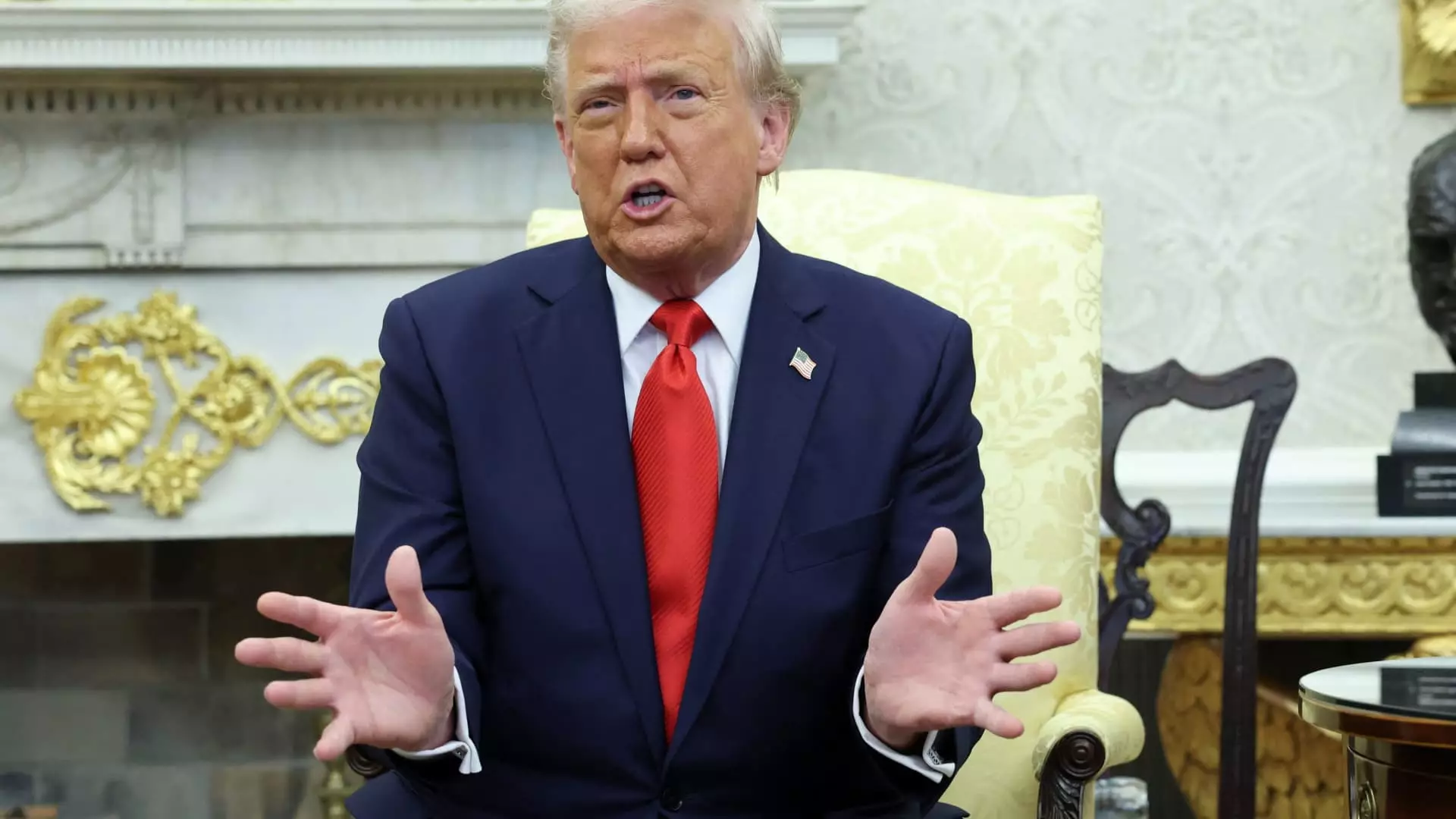In a remarkable twist of fate, Wall Street banks have reported their most significant earnings in stock trading history, amassing a staggering $16.3 billion in the first quarter. This landmark financial achievement comes in the wake of Donald Trump’s polarizing presidency, a time marked by volatility and uncertainty across global markets. The figures reveal that major players like Goldman Sachs, Morgan Stanley, JPMorgan Chase, and Bank of America raked in nearly $4 billion each, amidst trading turmoil that seemed ripe for upheaval rather than stability.
The latest data reflects not just a windfall for these financial giants, but a profound shift in how they operate and profit. The 33% year-over-year increase stands as a testament to a new era in trading dynamics, where the inability of the investment banking sector to capitalize on lucrative mergers and acquisitions left trading desks to thrive. This paradox raises questions about the future landscape of Wall Street – will trading dominance replace traditional investment banking as the main backbone of financial institutions?
A Tectonic Shift in Strategic Investment
With corporate leaders feeling a heightened sense of ambivalence amidst Trump’s tumultuous policies, strategic decisions have been sidelined. Investment activity in terms of mergers or IPOs has dwindled, leading to a palpable shift in focus toward trading revenues, where volatility reigns supreme. Analysts have enthusiastically labeled this financial quarter as “spectacular,” suggesting that the trading desks have become the unexpected heroes in a saga that initially appeared designed for investment bankers.
The underlying theme of uncertainty brought about by fluctuating tariffs and trade discussions has compelled institutional investors to reposition. James Shanahan, a bank analyst from Edward Jones, mentioned that the volatility isn’t likely to cease anytime soon, indicating that as long as traders are agile and receptive to market swings, their profitability will maintain momentum. This resilience could potentially prevent a broader economic downturn, especially if the banks continue to innovate and adapt.
The Impact of Economic Uncertainty on Regional Banks
While large banks bask in their trading triumphs, regional banks face a daunting struggle. Absent the robust trading operations that define their larger counterparts, these financial institutions find themselves trapped in a limbo of stagnant loan growth contrasted against rising default rates. It’s a scenario that could exacerbate economic imbalances, amplifying the challenges smaller banks confront in an increasingly concentrated financial environment.
As JPMorgan Chase anticipates a rise in unemployment rates, climbing from 4.2% to an alarming 5.8%, the specter of economic decline looms larger. The disparity between regional institutions and their more prominent rivals threatens to amplify an existing divide; the mechanisms the major banks are employing to streamline trading and offer greater leverage might further isolate smaller entities.
Trump’s Policies: A Catalyst for Market Activity
Trump’s presidency serves as a convoluted case study for Wall Street. His immediate plunge into aggressive trade policy, marked by proposed tariffs just days into his term, sent shockwaves through a marketplace that prefers predictability. Yet, the resulting chaos fueled greater trading activity, as hedge funds and institutional investors scrambled to recalibrate their strategies.
In this climate of chaos, Goldman Sachs and others excelled, demonstrating acute adaptability to sway with market movements. David Solomon, CEO of Goldman, affirmed that the second quarter could be even more lucrative as client activity remains robust. The question, however, is whether this turbulent environment can sustain these unprecedented levels of trading success. With potential future regulatory changes on the horizon influenced by the political landscape, uncertainty may once again upend expected gains.
The Evolution of Wall Street’s Trading Landscape
In the aftermath of the 2008 financial crisis, Wall Street underwent a staggering transformation, leading to the consolidation of trading and investment banking among fewer institutions. The intensity of trading, accelerated by the necessity of quick decisions and execution, has come to define the modern fiscal landscape. Under the guidance of figures like Morgan Stanley’s Ted Pick, Wall Street innovations have fostered a more efficient structure where trading desks thrive by facilitating rather than merely betting on market outcomes.
This shift has birthed an era where profitability hinges not solely on predicting market rises, but on agile responsiveness to market fluctuations. As clients enjoy rapid executions and better leverage opportunities, Wall Street’s primary profit engine appears to be robust and evolving, potentially reshaping investment strategies for years to come.
While the record earnings provide a temporary reprieve from the uncertainty that defines this phase of American economic history, they also illuminate the fundamental changes taking place within the financial industry. One must wonder: in chasing the next wave of trading profits, will Wall Street risk neglecting the broader implications of sustained economic clarity, or will they continue to navigate this precarious political landscape with innovative strategies that keep them afloat?

